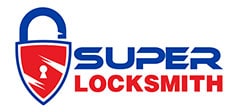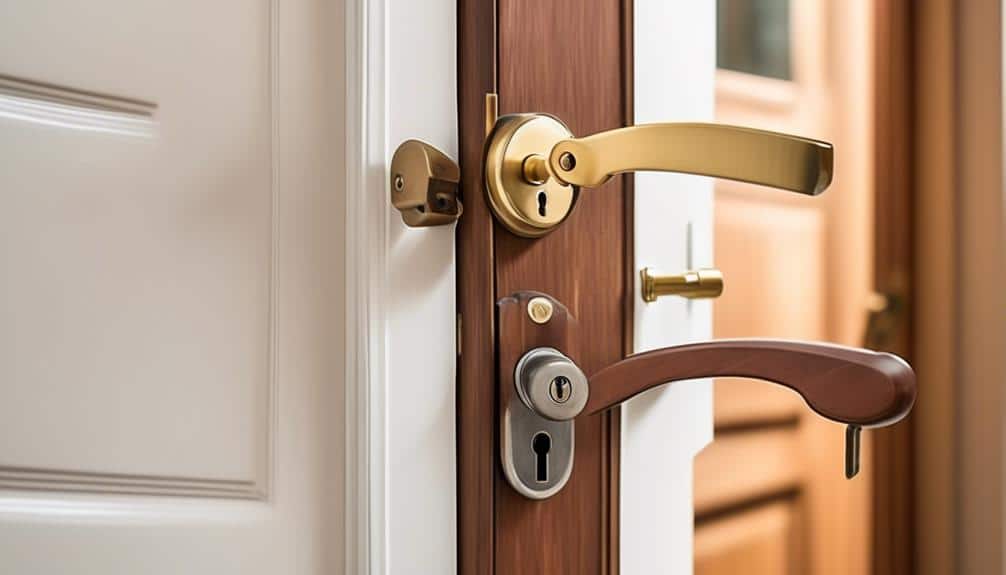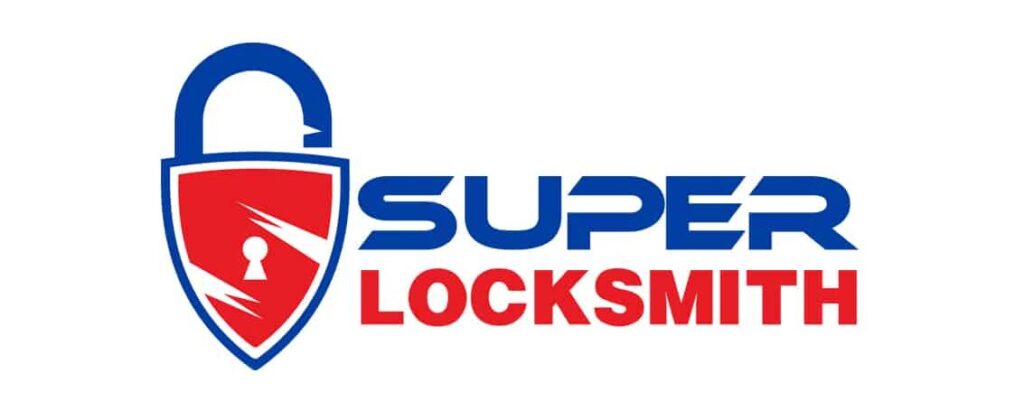Have you ever wondered what the top lock installation tips are for rental properties? Well, look no further.
In this discussion, we will explore the different types of locks suitable for rental properties, factors to consider before installing locks, best practices for choosing lock brands, steps to prepare the property for lock installation, how to measure and choose the right lock size, tips for hiring a professional locksmith, and the importance of maintenance and inspection of locks in rental properties.
Whether you're a landlord or a tenant, these tips will help ensure the security and peace of mind you desire.
Types of Locks Suitable for Rental Properties
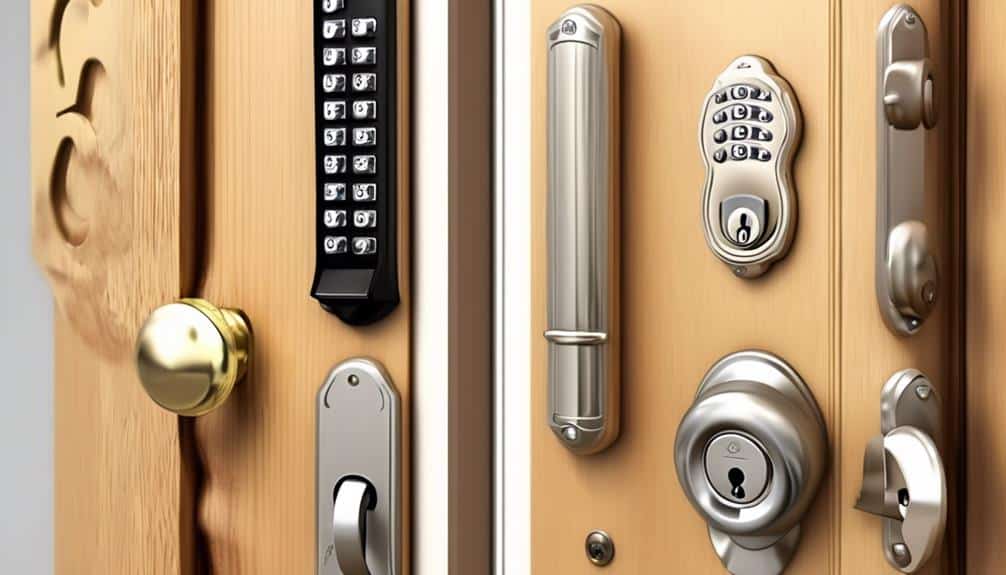
When choosing locks for rental properties, it's important to consider the different types available that offer optimal security and ease of use. The security of a lock is crucial to protect the property and the tenants' belongings. High-security locks, such as deadbolts and electronic locks, are recommended for rental properties. These locks provide additional security features, such as anti-pick and anti-drill mechanisms, making them harder to break into. Deadbolts, in particular, are known for their strength and durability, making them an excellent choice for rental properties.
In terms of lock installation cost, it's important to balance affordability with security. While cheaper locks may save money initially, they may compromise the overall security of the property. It's advisable to invest in quality locks that provide the necessary security features, even if they come at a slightly higher cost. This ensures the safety of the property and the peace of mind of both the landlord and the tenants.
Factors to Consider Before Installing Locks
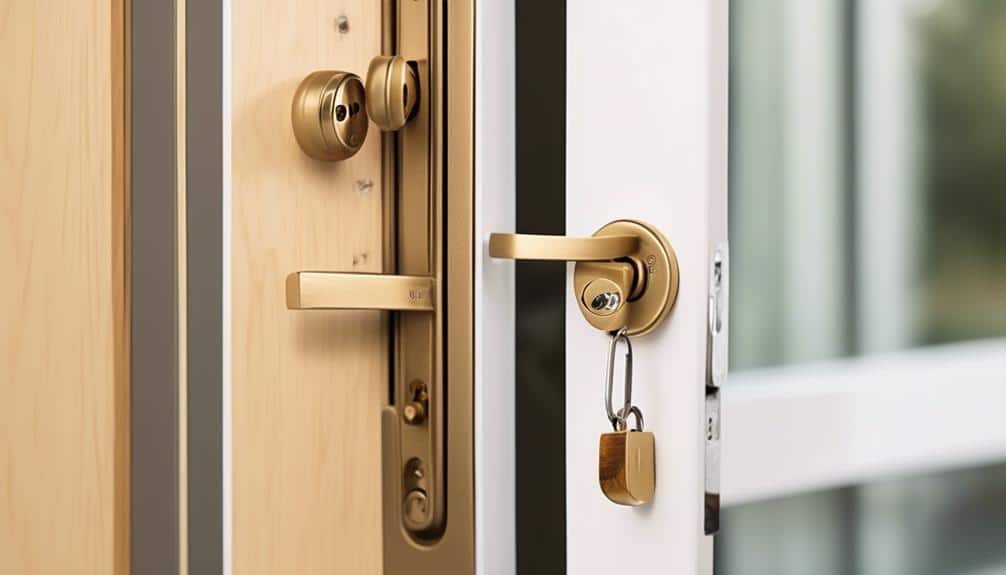
Before proceeding with lock installation in rental properties, it's essential to carefully consider several factors to ensure the utmost security and convenience for both tenants and landlords. Taking these factors into account will help prevent common lock issues and ensure a smooth and secure living experience for everyone involved.
Here are three important factors to consider:
- Security Requirements: Assess the security needs of the rental property and its location. Factors such as crime rate, neighborhood safety, and previous incidents should be taken into consideration. Installing high-security locks, such as deadbolts or electronic locks, can provide an additional layer of protection.
- Tenant Convenience: Consider the convenience of the lock system for tenants. Opt for locks that are easy to use and maintain. Electronic locks with keyless entry or smart locks that can be controlled remotely can offer convenience and flexibility for tenants.
- Landlord Access: Evaluate the need for landlord access to the rental property. Consider installing locks with master key systems or keyless entry systems that allow landlords to access the property when needed while maintaining security and privacy for the tenants.
Best Practices for Choosing Lock Brands
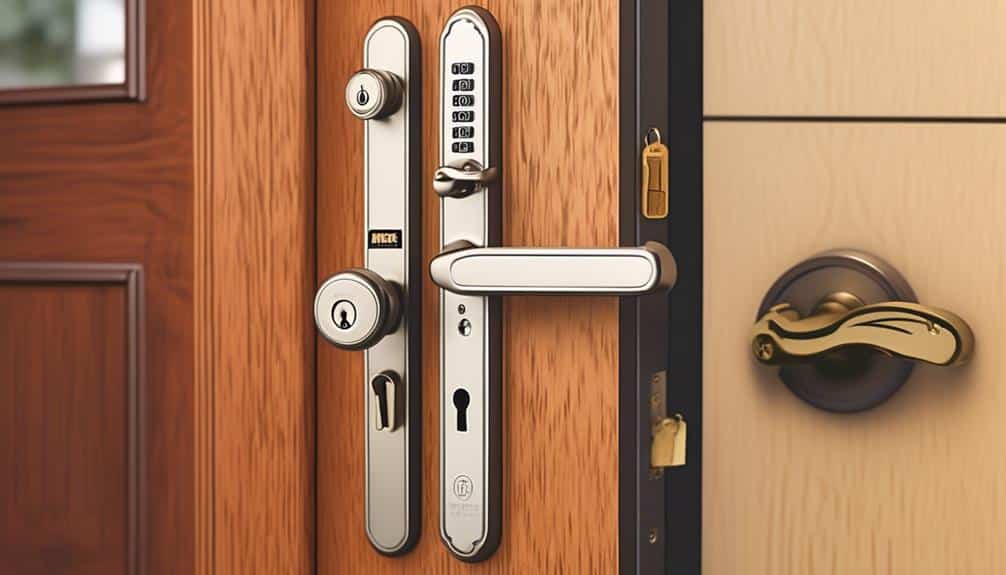
To ensure the highest level of security for your rental property, it is crucial to carefully select reputable lock brands. When choosing lock brands, there are several key factors to consider, such as keyless entry options and security features.
Keyless entry options offer convenience and ease of use for both tenants and property owners. These options eliminate the need for physical keys, which can be lost or duplicated. Instead, tenants can access the property using a unique code or a smartphone app. This not only enhances security but also allows for easy access management, as codes can be changed or revoked as needed.
When evaluating lock brands, it is important to look for specific security features. These can include reinforced strike plates, anti-drill pins, and pick-resistant cylinders. Reinforced strike plates provide extra strength and prevent the door from being kicked in. Anti-drill pins protect against drilling attacks, while pick-resistant cylinders make it difficult for would-be intruders to manipulate the lock.
To help you make an informed decision, here is a table comparing some popular lock brands and their key features:
| Lock Brand | Keyless Entry Options | Security Features |
|---|---|---|
| Brand A | Yes | Reinforced strike plates, pick-resistant cylinders |
| Brand B | Yes | Anti-drill pins, reinforced strike plates |
| Brand C | No | Pick-resistant cylinders, anti-drill pins |
Steps to Prepare the Property for Lock Installation
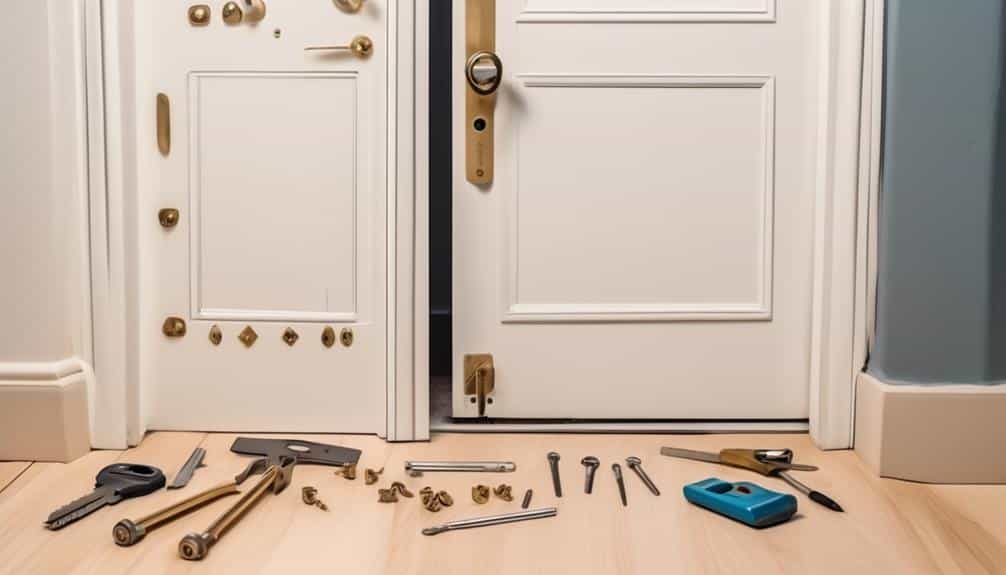
Now that we've discussed the importance of choosing the right lock brands, let's move on to the steps that need to be taken to prepare the property for lock installation.
The first step is to conduct a thorough property inspection to identify any existing locks that need to be replaced or repaired.
Once this is done, gather the necessary tools such as a drill, screwdriver, and measuring tape to ensure a smooth installation process.
Property Inspection
During the property inspection, we thoroughly assess the current state of the premises to ensure it's ready for lock installation. This step is crucial for the overall security and efficiency of the property.
Here are the key things we look for during the inspection:
- Property Maintenance: We check for any signs of wear and tear on doors, frames, and windows. Any cracks, loose hinges, or other damage should be repaired to ensure proper installation of locks.
- Security Measures: We evaluate the existing security measures, such as alarm systems, surveillance cameras, and lighting. It's important to ensure that the installation of locks aligns with the overall security plan of the property.
- Accessibility: We assess the accessibility of the property, including the number of entry points and their locations. This helps us determine the type and number of locks needed for maximum security.
Necessary Tools
After thoroughly assessing the current state of the premises during the property inspection, we can now discuss the necessary tools for preparing the property for lock installation. Having the right tools is crucial to ensure a smooth and successful lock installation process. Here are some essential tools you will need:
| Tools | Description |
|---|---|
| Screwdriver | Used to remove and install screws on the lock |
| Drill | Necessary for creating holes for the lock |
| Chisel | Helps in shaping the recess for the strike plate |
| Tape Measure | Ensures accurate measurements for hole placement |
How to Measure and Choose the Right Lock Size
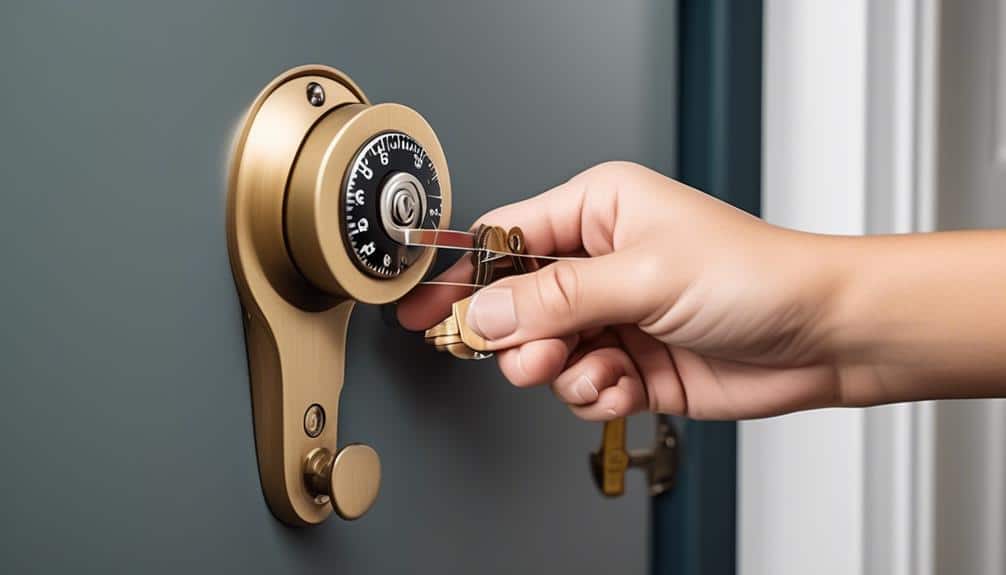
To ensure a proper fit for your rental property, it's essential to accurately measure and select the appropriate lock size. Here are some tips to help you with this process:
- Measure the door thickness: Use a tape measure to determine the thickness of the door. This measurement is crucial as it will determine the length of the lock's latch and bolt. Make sure to measure both the interior and exterior sides of the door, as they may have different thicknesses.
- Determine the backset: The backset refers to the distance between the edge of the door and the center of the lock's borehole. Common backset measurements are 2-3/8 inches and 2-3/4 inches. Measure this distance accurately to ensure that the lock aligns properly with the door frame.
- Consider the handle type: Different lock sizes are designed to accommodate different handle types, such as knobs or levers. Ensure that the lock you choose is compatible with the handle style you prefer.
Tips for Hiring a Professional Locksmith for Lock Installation
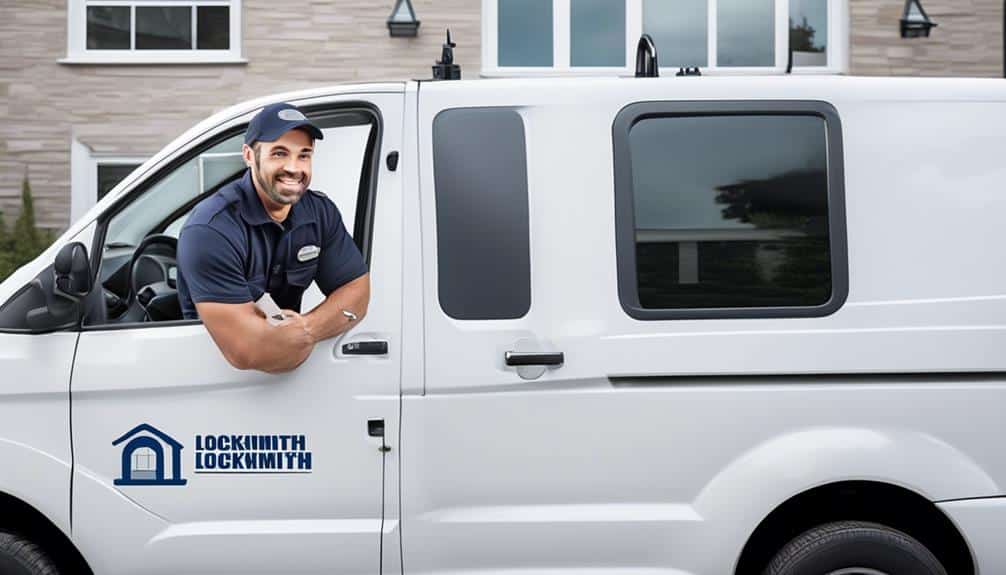
Hiring a professional locksmith for lock installation is a crucial step in ensuring the security and functionality of your rental property. When it comes to finding affordable locksmith services, it's important to do your research and ask the right questions. Here are some tips to help you hire a reliable locksmith for your lock installation needs:
- Get recommendations: Ask friends, family, or other property owners for recommendations to find reliable and affordable locksmith services in your area.
- Check credentials: Verify that the locksmith is licensed, insured, and bonded. This will ensure that they're qualified to handle your lock installation and any potential issues that may arise.
- Request estimates: Contact multiple locksmiths and request written estimates for the lock installation. This will help you compare prices and choose the most affordable option.
- Ask about warranties: Inquire about any warranties or guarantees offered by the locksmith for their work. This will give you peace of mind knowing that they stand behind their services.
- Clarify the timeline: Discuss the expected timeframe for the lock installation with the locksmith. This will help you plan and coordinate the installation process smoothly.
Maintenance and Inspection of Locks in Rental Properties
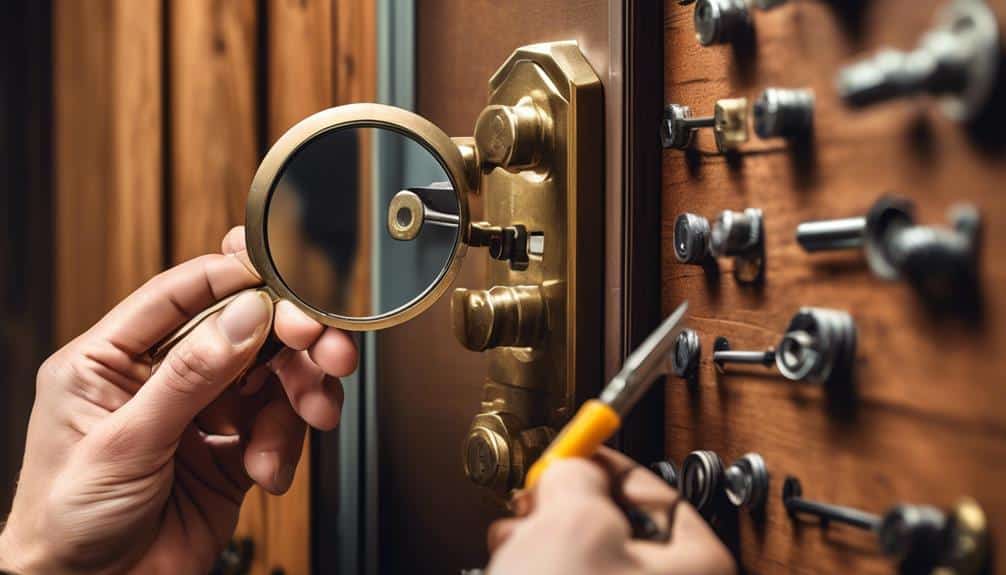
Now let's talk about the importance of maintaining and inspecting locks in rental properties.
To ensure the security of our tenants, it's crucial to follow a lock maintenance checklist and conduct regular lock inspections.
Lock Maintenance Checklist
Regular maintenance and inspection of locks in rental properties is essential to ensure their proper functioning and enhance the security of the premises. Here is a checklist of lock maintenance tasks that should be performed regularly:
- Lock Lubrication: Apply lubricant to the lock mechanism at least once a year. This helps prevent rust and ensures smooth operation.
- Key Duplication Process: Regularly inspect keys for signs of wear and tear. If any keys are damaged or starting to show signs of deterioration, replace them promptly. Additionally, keep a record of all key duplicates made for the property to maintain control over access.
- Check for Loose or Worn Parts: Inspect locks for loose screws, worn-out springs, or other signs of damage. Tighten any loose screws and replace any worn-out parts to maintain the lock's integrity.
Regular Lock Inspections
Inspecting locks regularly is crucial for maintaining the security and functionality of rental properties. Regular lock maintenance ensures that the locks are in proper working condition and reduces the risk of break-ins or lockouts.
By conducting regular lock inspections, landlords can identify any potential issues or signs of wear and tear, such as loose screws, broken keys, or damaged lock cylinders. Addressing these issues promptly can prevent costly repairs or replacements in the future.
Additionally, regular lock inspections provide peace of mind to tenants, as they can trust that the locks are secure and reliable. By investing time and effort into regular lock maintenance, landlords can ensure the safety and satisfaction of their tenants while protecting their property.
Frequently Asked Questions
Are Fingerprint or Smart Locks Suitable for Rental Properties?
Fingerprint and smart locks have their pros and cons in rental properties.
Fingerprint locks offer convenience and eliminate the need for keys, but they may not be suitable for properties with frequent turnover.
Smart locks provide remote access control and can be easily programmed, but they may raise security concerns due to potential hacking or technical malfunctions.
Ultimately, landlords should carefully consider the specific needs of their rental properties before deciding on the type of lock to install.
What Are the Legal Requirements for Lock Installation in Rental Properties?
When it comes to lock installation in rental properties, it's important to be aware of the legal requirements.
Landlords have certain responsibilities when it comes to providing a secure living space for their tenants. These responsibilities may include ensuring that the locks on the property meet certain security standards and are in good working condition.
Additionally, security deposit regulations may require landlords to change the locks between tenants to ensure the safety of new occupants.
Can I Install Additional Locks on My Rental Property Without Landlord Permission?
Yes, we can understand the desire to feel secure in our rental property. However, it's important to note that installing additional locks without landlord permission can have consequences.
Unauthorized lock installation may violate the terms of your lease agreement and potentially lead to legal issues.
It's always best to communicate with your landlord and seek their permission before making any modifications to the property. This ensures a smooth and lawful rental experience for both parties involved.
Are There Any Specific Lock Brands Recommended for Rental Properties?
When it comes to the best lock brands for high security rental properties, there are a few factors to consider.
We recommend brands like Schlage, Kwikset, and Yale, as they're known for their durability and reliability. These locks offer advanced features like keyless entry and reinforced strike plates, which can enhance the security of your rental property.
It's important to choose locks that are resistant to picking and drilling, and to consult with a professional locksmith for the best advice on securing your rental property.
How Often Should Locks Be Inspected and Maintained in Rental Properties?
Regular lock maintenance is crucial in rental properties. It ensures the safety and security of tenants and their belongings.
Inspecting and maintaining locks should be done on a regular basis to prevent potential issues and address them promptly. Signs that locks need inspection and repair include difficulty in turning the key, loose or wobbly locks, and visible signs of wear and tear.
